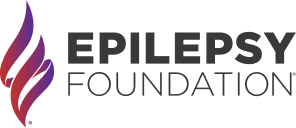Two Mechanisms that may Underlie Autism Spectrum Disorder and Epilepsy
This article gives ideas about possible causes and brain changes in people with autism spectrum disorder and epilepsy. Each new finding can lead to more clues and answers for these complicated health problems.
Epilepsy News From: Wednesday, July 20, 2016
Epilepsy can occur with mood or other neurological conditions that are known as “comorbidites.” For example, anxiety, depression, and autism spectrum disorder (ASD) may occur with epilepsy. In a previous epilepsy.com article, we talked about the comorbidity of ASD and epilepsy. In this article, we review how scientists have been studying the link between ASD and epilepsy.
A recent Frontiers in Neuroscience article summarizes findings about what we know might go on in the brains of people who have ASD and epilepsy together. Exploring what happens in the brain is important because that will help us come up with potential therapies.
What has been shown to underlie epilepsy or ASD or both disorders?
Abnormalities in Brain Architecture
The brain’s architecture is made up of different types of cells and nerves that give it structure. A specific area of the brain’s cortex or outer layer (called a minicoloumn) has nerve cells (neurons) organized in a specific way. It looks like a dense network of nerves fibres and their branches and synapses, together with glial cells that support the neurons. A decrease in this minicoloumn area has been found in individuals with ASD.
GABAergic Neurotransmission
Gamma amino butyric acid (GABA) is the main inhibitory neurotransmitter in the brain; these can stop or slow down the way activity flows thru cells. Changes in GABAergic activity have been seen in epilepsy.
Genetics
Changes in some genes may be responsible for ASD that occurs with epilepsy:
- Genes coding for GABAergic receptors
- Genes known as CNTNAP2 and CNTNAP4 code for a family of proteins (called neuexins)
- The product of a gene known as SYNGAP is also important for proper neurotransmission
Vitamin Deficiencies
Two important vitamins that may play a role are cobalamin and folate.
Heavy Metals
Mercury has been implicated in ASD and epilepsy, although we don’t know how.
Authored by
Sloka Iyengar PhD
Reviewed Date
Wednesday, July 20, 2016
